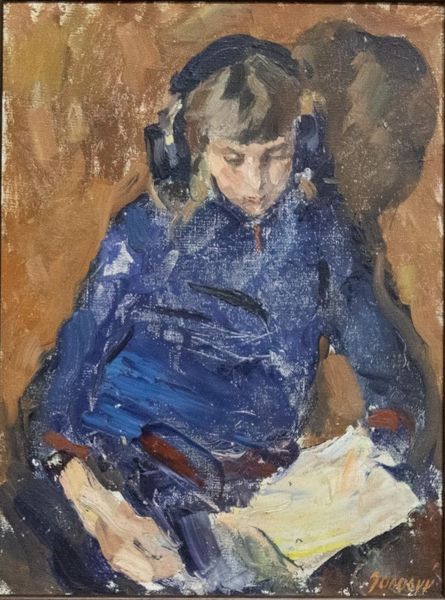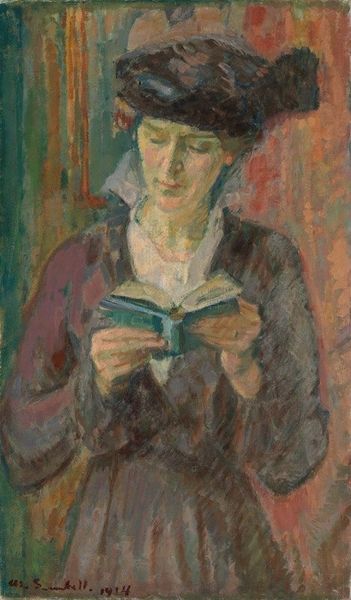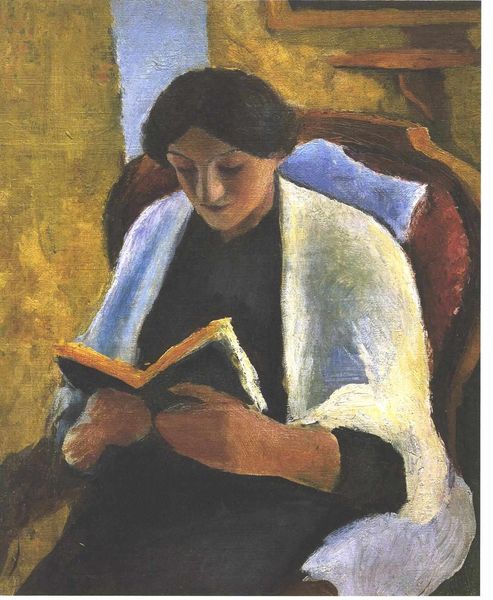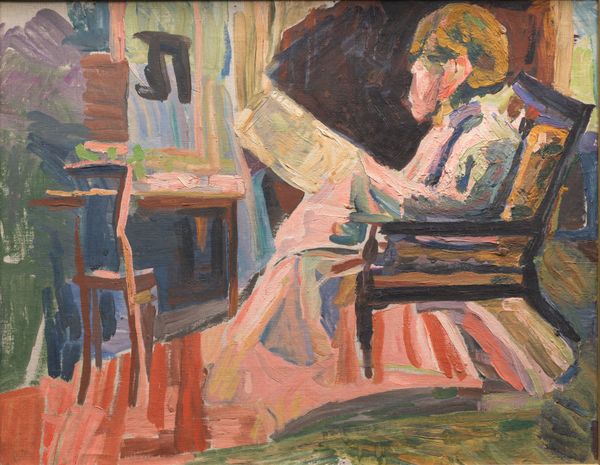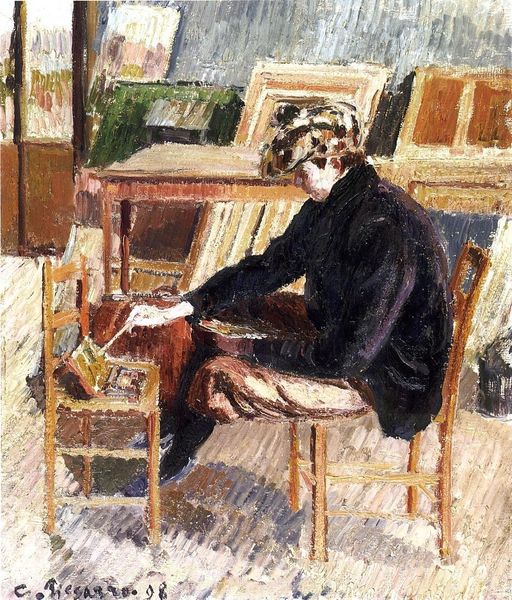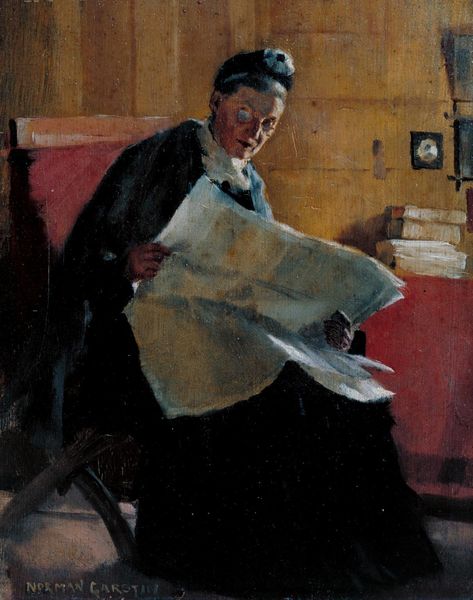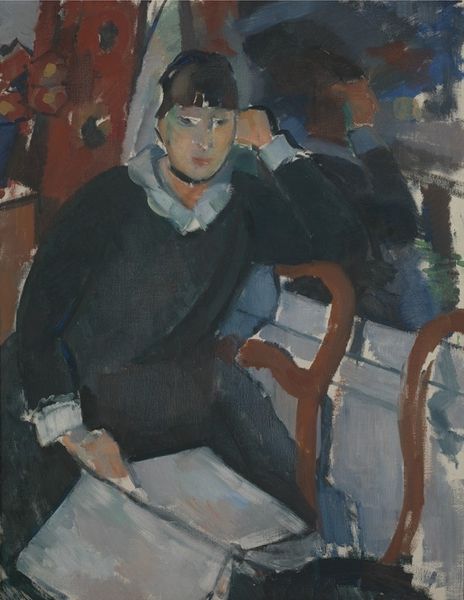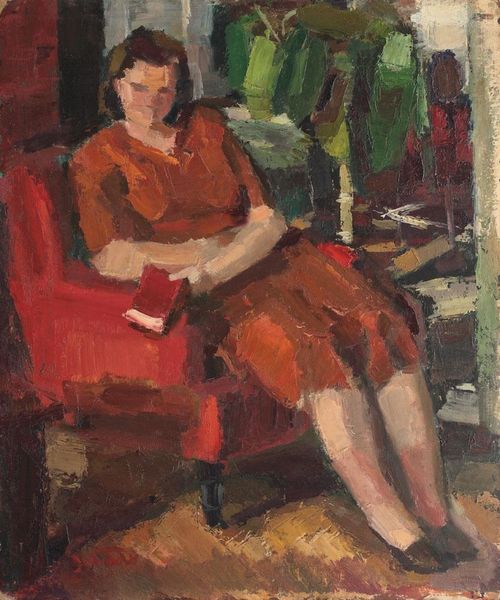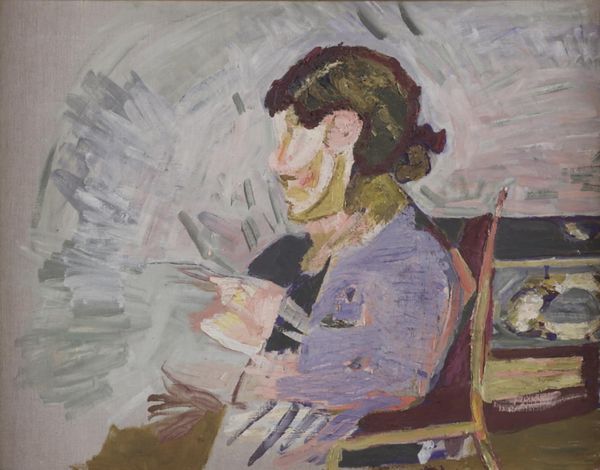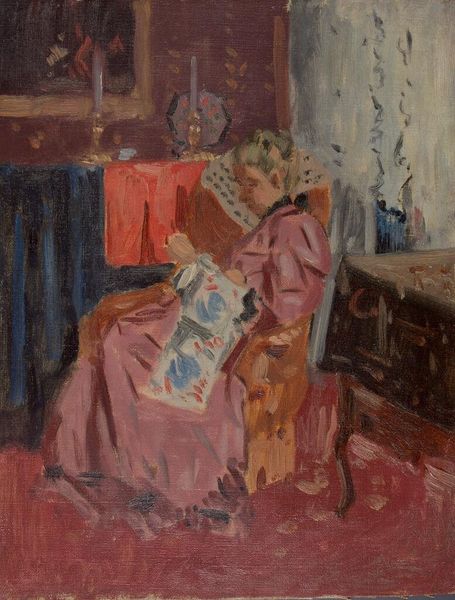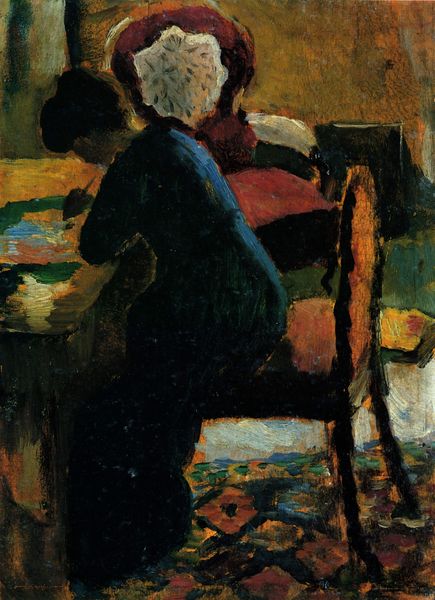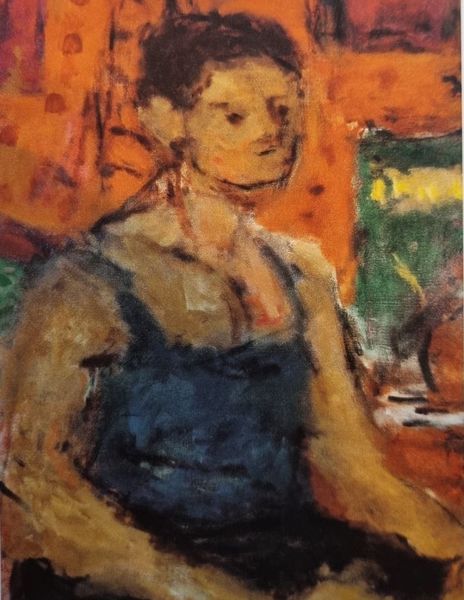
oil-paint
#
portrait
#
oil-paint
#
oil painting
#
expressionism
#
portrait art
Copyright: Public domain US
Editor: Here we have Czóbel Béla's "Olvasó Nő," or "Reading Woman," painted in 1916 using oil paint. The colours create a rather subdued mood; almost melancholic. What do you make of the formal elements at play in this portrait? Curator: Note the artist’s masterful manipulation of color to evoke precisely that subdued mood. The earth tones dominate, creating a sense of somber introspection. How does the composition itself contribute to the feeling you identified? Editor: The subject’s downward gaze and the slight asymmetry adds to the sense of pensiveness. The loose brushstrokes, typical of expressionism, seem to intensify the emotions, too. It’s a window into her state of mind. What about the use of line and shape? Curator: Precisely. Consider how Czóbel departs from realism. He employs flattened planes and simplified forms to construct the figure. Observe the sharp, almost Cubist-like facets in the face. The interplay between these fragmented shapes and the blurred edges gives the portrait a dynamic tension. What is your feeling on the lines created through light? Editor: Fascinating! I hadn’t considered the interplay of Cubist elements within an Expressionist context. Thinking about it, that angularity really does bring forth something interesting. And you’re right – it really emphasizes certain forms, and creates an intentional dissonance. Thank you for that formal deconstruction! Curator: The work reveals how much can be conveyed through a rigorous study of form and its semiotic potential. I will make sure to apply that approach from now on.
Comments
No comments
Be the first to comment and join the conversation on the ultimate creative platform.
